The Best Fruits to Freeze and How to Freeze Them for Smoothies
If you’ve ever found yourself with an abundance of fruit from the garden, grocery store sales, or a farmer’s market, you know the struggle of using it up before it goes bad. Freezing fruit is one of the best ways to preserve that fresh, ripe flavor, especially for smoothies, desserts, or even a quick snack.
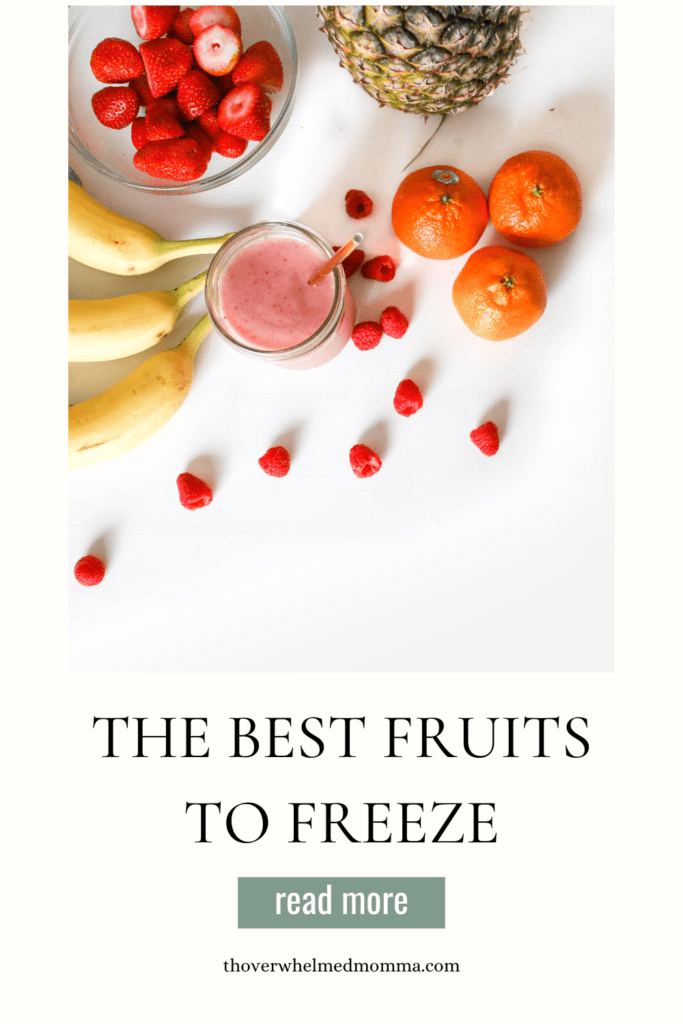
As an Amazon Associate, I earn from qualifying purchases at no additional cost to you. Thank you for supporting The Overwhelmed Momma!
But not all fruits freeze equally well. Over the years, I’ve experimented with freezing a variety of fruits, and I’m excited to share which ones work best, how to freeze them, and some tips for keeping your fruit freezer stash fresh and flavorful.
This post is all about freezing fruit, the best fruits to freeze and how to freeze them for smoothies.
Why Freeze Fruit?
Freezing fruit allows you to enjoy seasonal produce all year long. It’s also a wonderful way to cut down on food waste while saving money, which is something I appreciate as a mom working toward a self-sufficient lifestyle.
Not to mention, having frozen fruit on hand makes smoothie-making a breeze. The fruit serves as a natural thickener and cooler, saving time and keeping the texture just right.
Best Fruits to Freeze
1. Berries (Strawberries, Blueberries, Raspberries, Blackberries)
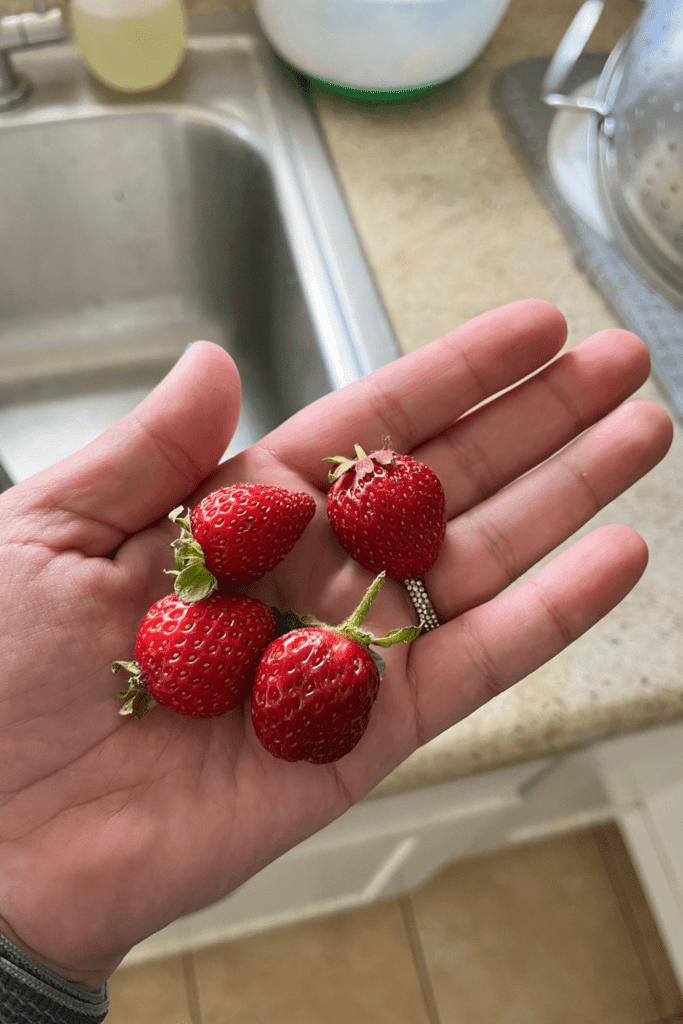
Berries are some of the best fruits to freeze because they hold their flavor and nutrients well. When my garden produces an abundance of strawberries, I freeze them in batches. Blueberries and raspberries are also incredibly easy to freeze and work great in smoothies or as a quick snack right out of the freezer.
- How to Freeze: Wash berries thoroughly and pat them dry to prevent freezer burn. Spread them out on a baking sheet in a single layer and freeze until solid, then transfer them to freezer bags. This step is key to prevent clumping.
2. Bananas
Bananas are a must-have in my freezer, especially for smoothies and banana bread. Their natural creaminess adds thickness and sweetness without any added sugar, which my kids love. Overripe bananas work perfectly here, so this is a great way to avoid waste.
- How to Freeze: Peel bananas and slice them into chunks, then spread them on a baking sheet in a single layer to freeze before transferring to a freezer bag. This prevents them from sticking together. Label and freeze.
3. Peaches and Nectarines
Freezing peaches and nectarines lets you enjoy a taste of summer even in the dead of winter. They can be a bit more labor-intensive to freeze, but the reward is worth it, especially when you add them to smoothies or pies.
- How to Freeze: To keep them from browning, I like to blanch peaches first by dipping them in boiling water for about 30 seconds and then placing them in ice water. Peel, pit, and slice before freezing on a baking sheet, then transfer to labeled freezer bags. Adding a little lemon juice can also help preserve color.
4. Pineapple
Pineapple adds a burst of tropical flavor and a touch of natural sweetness to smoothies. I often buy whole pineapples, especially when they’re in season, and freeze the extras.
- How to Freeze: Remove the outer skin and core, a pineapple corer makes quick work of this step. Cut into chunks, and freeze in a single layer on a baking sheet before transferring to a labeled freezer bag. Freezing pineapple is easy, and it stays fresh for up to six months.
5. Cherries
Cherries can be a bit pricey, but they freeze well and add a delicious flavor to smoothies, yogurt bowls, or desserts. I freeze them every summer when they’re at their peak.
- How to Freeze: Pit the cherries (a cherry pitter makes this much faster), then place them on a baking sheet to freeze before transferring to a labeled freezer bag. Be sure to pat them dry after washing to avoid extra moisture.
6. Grapes
Grapes are surprisingly delicious frozen! They make a refreshing snack on their own or can be added to smoothies. My kids love them as a quick, healthy treat straight from the freezer.
- How to Freeze: Pick the grapes off the vine then wash and dry the grapes thoroughly. Spread them out on a baking sheet to freeze before transferring to a freezer bag. This prevents them from sticking together.
Can You Freeze Fruit with High Water Content?
While most fruits can be frozen, some high-water-content fruits like watermelon and oranges don’t always freeze well in terms of texture. However, if you plan to use them in smoothies, they can still be good options.
- Watermelon: Cut into chunks and remove seeds. Freeze in a single layer before transferring to a bag. It will be mushy when thawed, but it works well in smoothies.
- Oranges: Peel and separate into segments, removing any seeds. Freeze the segments in a single layer, and they can be a refreshing addition to a smoothie.
How to Freeze Fruits for Smoothies
If you’re wondering how to freeze fruits for smoothies, the key is to freeze them individually first on a baking sheet. This keeps the fruit pieces separate, so you can easily grab just what you need. Here are some additional tips:
- Create Smoothie Packs: Prepare smoothie packs by combining the right portion of fruits in a single freezer bag. For example, mix a handful of strawberries, a banana, and a few chunks of mango for a quick grab-and-blend option. This saves time and makes mornings easier.
- Use Freezer-Safe Bags or Containers: Make sure you’re using high-quality, freezer-safe bags to prevent freezer burn and maintain flavor.
- Label and Date Everything: This helps you keep track of when you froze each fruit, so you use up older items first and avoid waste.
Tips for Freezing Fruit
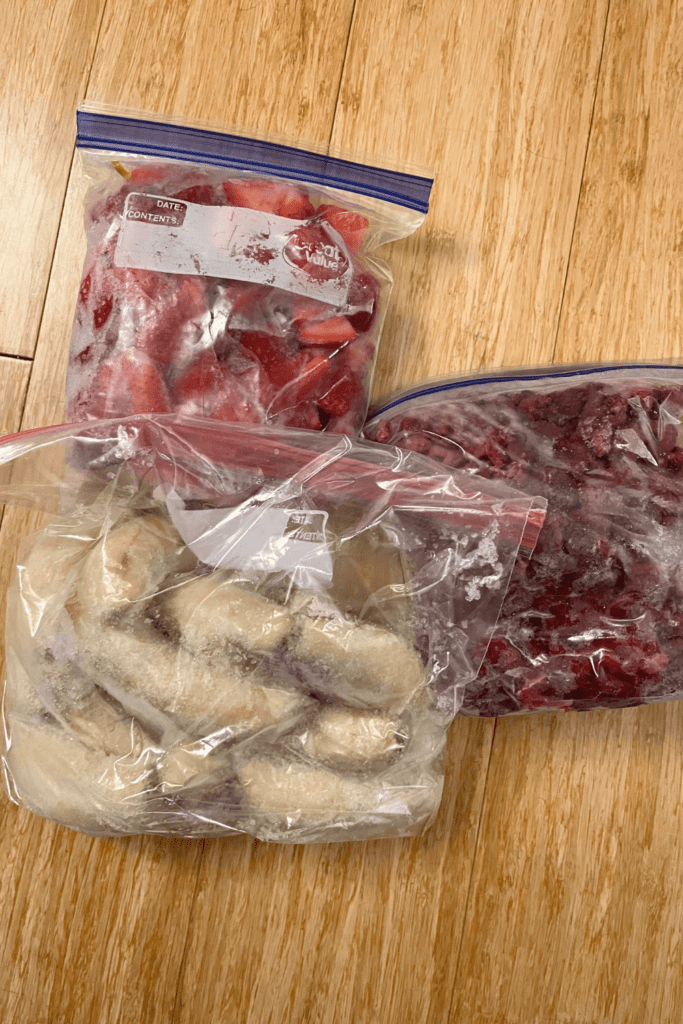
Freezing fruit doesn’t have to be complicated, but here are a few additional tips to make sure your fruit stash stays fresh:
- Dry Thoroughly: After washing, make sure to pat fruits dry. Extra moisture can lead to freezer burn, which impacts both taste and texture.
- Use Ripe, Fresh Fruit: Freeze fruit when it’s at its ripest for the best flavor. Avoid freezing fruits that are already overly soft or bruised, as they won’t hold up well.
- Keep Portions in Mind: It can be helpful to portion fruit into the amount you’d use in a single smoothie serving. This way, you’re not thawing more than you need.
FAQs About Freezing Fruit
Can you freeze fruit for long-term storage?
Yes, most fruits can be stored in the freezer for up to 6–12 months. Just be sure to keep an eye on the quality, as some fruits may lose flavor over time.
What about freezing fruit with sugar?
Adding sugar can help preserve the color and flavor of fruits like berries and peaches, but it’s not essential if you plan to use them in smoothies.
Do frozen fruits lose nutrients?
Freezing fruits does preserve most nutrients, although some water-soluble vitamins like vitamin C may slightly diminish. However, frozen fruit still offers plenty of nutrients, making it a great option for healthy eating year-round.
Final Thoughts on Freezing Fruit
This post was all about freezing fruit, the best fruits to freeze and how to freeze them for smoothies.
Freezing fruit is a fantastic way to make the most of seasonal abundance and reduce waste. By experimenting with different fruits, I’ve found what works best for my family’s tastes and needs.
Having a stash of frozen fruit ready for smoothies, snacks, or baking projects has become an essential part of our household routine. Whether you’re a mom juggling a busy schedule or just looking to simplify meal prep, frozen fruit is a convenient, nutritious option you’ll be glad to have on hand.
So, next time you see a great deal on fruit or harvest a bumper crop, go ahead and freeze some of it! The versatility and simplicity of frozen fruit make it one of the best ways to enjoy nature’s sweetness year-round.
Some Post You May Like:
- Fresh Milled Flour Cornbread (Easy, Sweet, and So Cozy)
- Slow Cooker Beef Chili With Beans (a busy family fall and winter favorite!!)
- Simple Tortilla Soup (Elote Style): A No-Stress Dinner That’ll Warm Everyone Up
- How to Start Baking with Fresh Milled Flour As A Beginner (No Overwhelm)
- What I Make When I’m Too Tired to Cook: Easy Dinner Ideas for Busy Moms

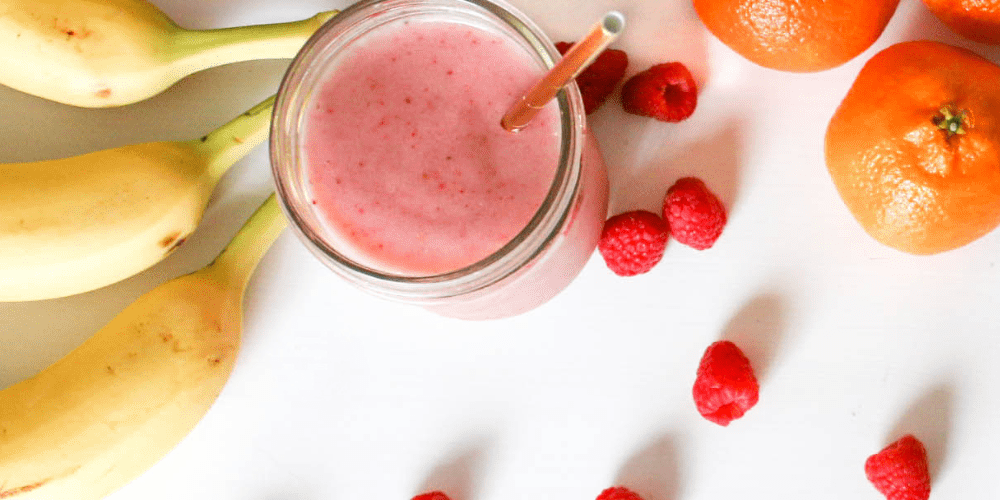
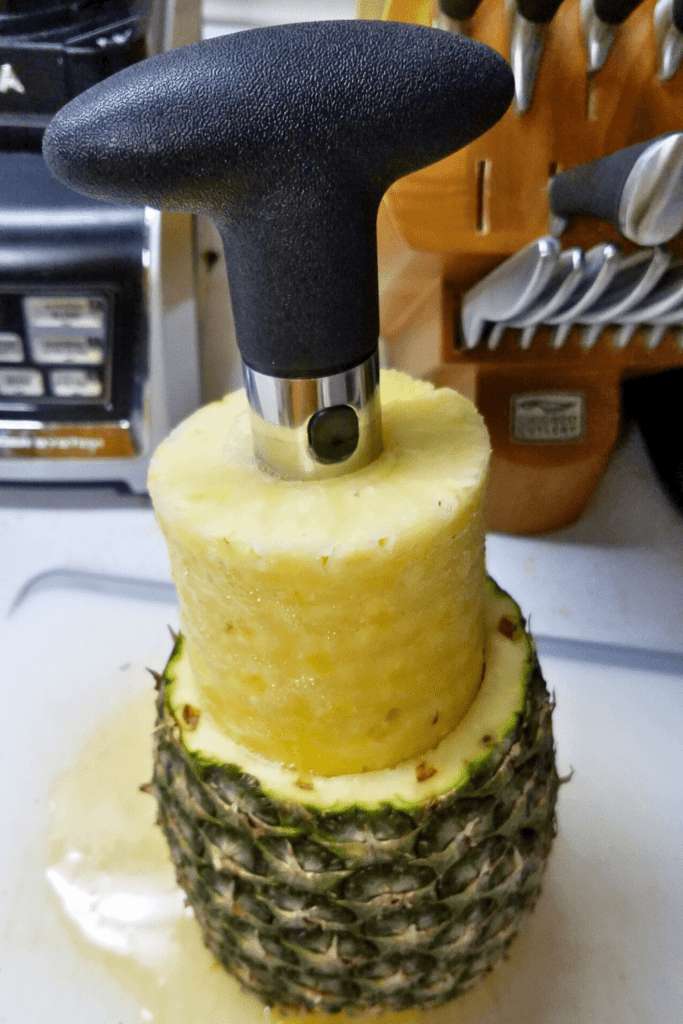
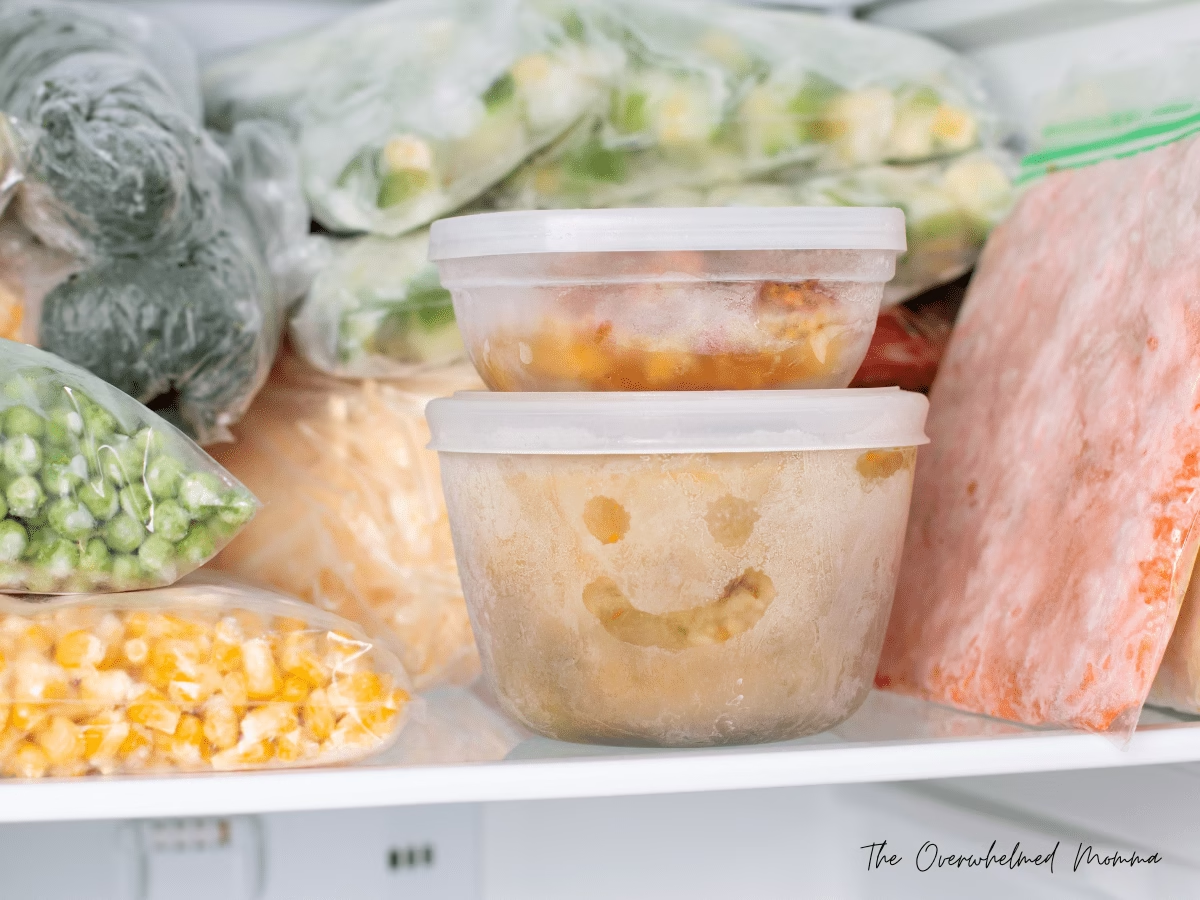
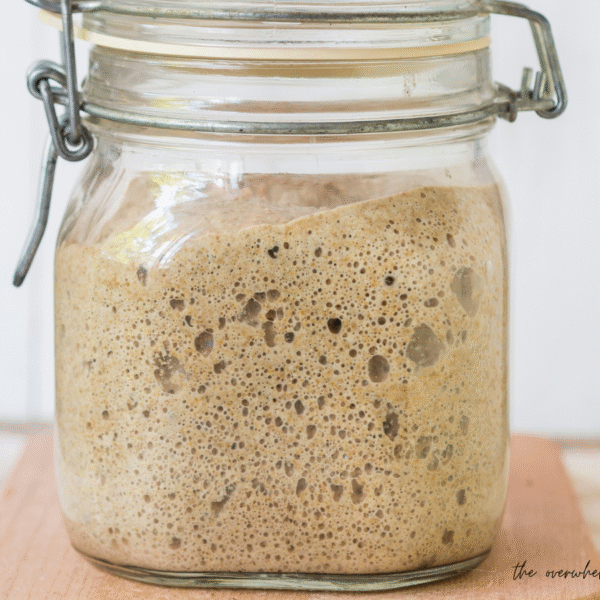

Leave a Reply